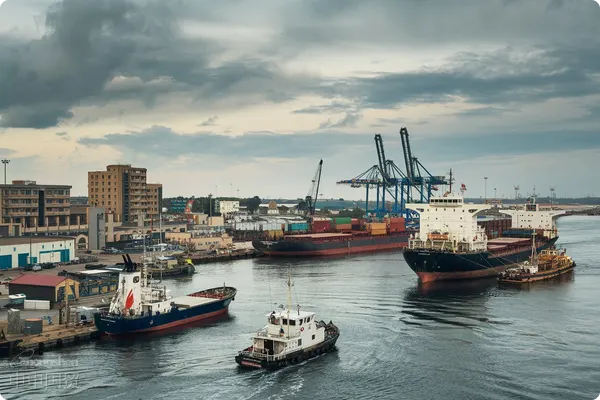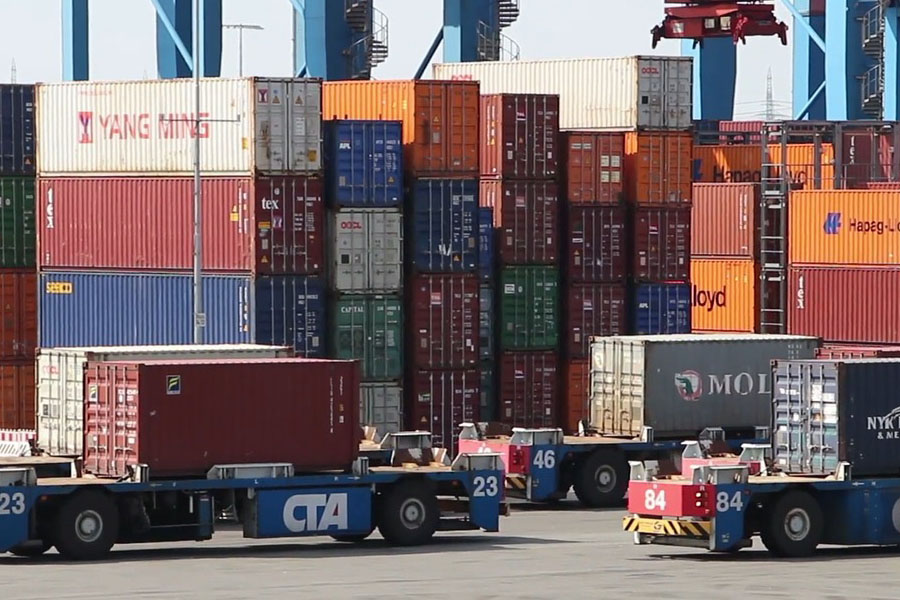- Shanghai Zhongshen International Trade Co., Ltd. - Two decades of trade agency expertise.
- Service Hotline: 139 1787 2118

Japanese Imported Ties:foreign tradeProcess and Strategy Fully Analyzed
On the grand stage of global trade, importing ties from Japan presents numerous opportunities and challenges. For many businesses, understanding a clear and professional import process and leveraging reliable foreign trade agency services are key to successful operations.
I.ZhongShen International TradeProfessional advantages: Documentation handling and logistics arrangements
- Documentation Processing
Documents in international trade are like passports, and their accuracy and completeness are crucial. ZhongShen International Trade has an experienced documentation team proficient in handling various trade documents, such as Commercial Invoices, Bills of Lading (B/L), Packing Lists, etc., with precision.
For example, when preparing a Commercial Invoice for importing ties from Japan, the team ensures detailed information such as the brand, style, quantity, unit price, and total price of the ties are listed, complying with the relevant customs regulations of the importing country. For the Bill of Lading, they accurately selectMaritime Transportationan Ocean Bill of Lading or a Multimodal Transport Bill of Lading based on the actual transportation situation, ensuring clear and unambiguous proof of ownership during the shipping process.
At the same time, when processingIt is recommended to verify through the following methods:a Certificate of Origin, if the ties meet specific rules of origin, they may qualify for corresponding tariff preferences. The team assists importers in obtaining valid Certificates of Origin to reduce import costs. - Logistics Arrangement
The logistics phase is critical to ensuring the timely and safe arrival of goods at their destination. ZhongShen International Trade has established long-term, stable partnerships with many internationally renowned logistics providers.
When importing ties from Japan, if sea freight is chosen, the appropriate shipping schedule and carrier are selected based on the quantity of goods and delivery timeline. For small shipments, Less than Container Load (LCL) transportation is a cost-effective option, while for large shipments, Full Container Load (FCL) transportation better ensures the integrity and efficiency of the goods.
After the goods arrive at the destination port, ZhongShen International Trade promptly arranges Customs Clearance procedures to ensure the goods can quickly and smoothly enter the domestic market. Additionally, they provide inland transportation services, delivering the goods directly to the importers designated warehouse or sales location, offering a Door to Door one-stop logistics solution.
II. The Unique Advantages of the Russian Market: VTBFX Settlement Agencyclose cooperation. Using VTB channels simplifies cumbersome procedures and accelerates settlements.
- Overview of Foreign Exchange Settlement
Foreign exchange settlement, simply put, involves selling foreign exchange earnings to designated banks at the current exchange rate to convert them into RMB. In international trade, a safe and efficient foreign exchange settlement process is crucial for a companys cash flow. - VTB Settlement Advantages
When ZhongShen International Trades clients import ties from Japan for sale in the Russian market, the VTB foreign exchange settlement channel demonstrates unique advantages. VTB Bank is a key financial institution in Russia and has established a strong cooperative relationship with ZhongShen International Trade.
Settling through VTB simplifies the process. First, after the importer signs a trade contract with the Russian client, the Russian client pays the amount to the designated VTB Bank account. ZhongShen International Trade assists the importer in preparing the necessary settlement documents, such as the Commercial Invoice, Bill of Lading copy, and trade contract, and submits them to VTB Bank. After verifying the documents, the bank converts the foreign exchange into RMB at the current exchange rate and pays the importer.
This settlement method is not only fast—typically completing the fund transfer in a short time—but also highly secure, effectively reducing exchange rate fluctuations and settlement risks. Additionally, due to VTBs extensive influence in the Russian financial market, it can provide flexible solutions for more complex trade scenarios.
III. Southeast Asian Market:import and exportProcess and Solutions
- Import Process
- Market research and supplier selection: When importing ties from Japan for sale in the Southeast Asian market, the first step is to conduct in-depth market research. Understand the market demand, consumer preferences, and trends for ties in different Southeast Asian countries. For example, in Singapore, the demand for ties in business settings is relatively stable, with a focus on quality and brands, while in Thailand, the tourism market has a greater demand for unique ties. Based on the market research results, select suitable Japanese suppliers to ensure product quality and supply stability.
- Sign a Trade ContractClarify the rights and obligations with Japanese suppliers, and specify in detail the specifications, quantity, price, delivery period, payment method, and transportation terms for ties in the contract. For example, the payment method can be chosen asL/C(Letter of Credit, L/C), which is a form of bank credit that provides certain guarantees for both buyers and sellers.
- : After the goods arrive at the destination, agents assist enterprises in completing customs clearance and delivery.Select an appropriate transportation method, with sea freight being the commonly used option. Additionally, purchase transportation insurance for the goods, such as Free from Particular Average (FPA), With Particular Average (WPA), or All Risks, to mitigate potential risks during transit.
- ClearanceAfter the goods arrive at the destination port in Southeast Asia, customs clearance must be conducted in accordance with local customs regulations. Prepare complete customs clearance documents, including commercial invoices, bills of lading, packing lists, and certificates of origin. Customs regulations may vary by country; for example, Malaysian customs may impose strict labeling and quality inspection requirements for imported textiles.
- Sales and DistributionAfter customs clearance, transport the ties to local warehouses and distribute and sell them according to the market sales plan.
- Solutions
To address the diversity of the Southeast Asian market, ZhongShen International Trade offers customized solutions. For countries with special certification requirements for imported goods, such as Indonesia, which may require environmental certifications for textiles, ZhongShen International Trade does not directly handle certification services but assists clients in understanding certification requirements, providing relevant information and guidance to help them complete the certification process smoothly and ensure the goods can enter the local market without issues.
Current International Trade Situation: Challenges and Opportunities
- Challenges
The current international trade landscape is complex and volatile, with rising trade protectionism posing a significant challenge. Some countries may introduce policies such as increased tariffs or trade barriers, which could impact the cost and market sales of ties imported from Japan. For instance, certain countries may impose high anti-dumping duties on imported textiles, increasing import costs and reducing the products competitiveness in the local market.
Additionally, exchange rate fluctuations introduce uncertainty to international trade. Fluctuations between the Japanese yen, Chinese yuan, and other major currencies may lead to higher import costs or compressed profit margins. For example, if the yen appreciates, the cost of importing ties from Japan will increase. - Opportunities
Despite these challenges, there are also numerous opportunities. With the gradual recovery of the global economy, consumer demand for fashion products continues to grow, and ties, as fashion accessories, hold significant market potential. This is especially true in emerging markets, such as some developing countries in Southeast Asia, where economic growth and increased business activities are driving rising demand for ties.
Meanwhile, the rapid development of e-commerce provides broader sales channels for imported ties. Through e-commerce platforms, importers can directly reach global consumers, breaking geographical barriers and expanding market share.
Product Certification Services
In the process of importing ties from Japan, product certification is a critical aspect that cannot be overlooked. Different regions and countries have varying certification requirements for textiles.
For example, the EU market may require ties to comply with REACH regulations, which impose strict limits on certain chemical substances in ties. While ZhongShen International Trade does not directly handle certification services, it leverages its extensive experience to assist clients in understanding relevant certification regulations and guide them in preparing the necessary documentation.
Additionally, for common certifications such as ISO quality certification, ZhongShen International Trade can provide consulting services to help clients better meet market demands and enhance product competitiveness.
In summary, the foreign trade business of importing ties from Japan requires professional knowledge, extensive experience, and reliable partners. With its expertise in document processing, logistics arrangements, and deep understanding of different markets, ZhongShen International Trade offers comprehensive, one-stop foreign trade agency services, helping businesses navigate the waves of international trade and achieve success.
Related Recommendations
? 2025. All Rights Reserved. Shanghai ICP No. 2023007705-2  PSB Record: Shanghai No.31011502009912
PSB Record: Shanghai No.31011502009912










